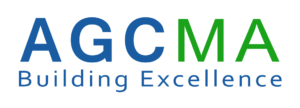White Paper: Enhancing Equity and Safety in Construction Workplaces
White Paper: Enhancing Equity and Safety in Construction Workplaces
Executive Summary
Using two years of data from the SAFE-T Survey, we have a clearer picture of the following:- Over 90% of tradespeople clearly understand management’s commitment to safety from the office to field leadership
- Less than 40% of tradespeople are getting daily instructions with a clear focus on safety
- 1/3 of workers are taking risks to do their jobs
- About 75% of workers almost always feel a sense of belonging and usually get satisfaction from their work
Background
For the second time, the AGC MA Safety Committee and CARE Construction Safety Program promoted the Safety Assessment of the Field Environment by the Trades (SAFE-T) Survey. In 2024, there were 996 responses to the survey and in 2025 there were 771 responses for a total of 1,767 total responses.Posters were placed on jobsites across Massachusetts and toolbox talks were conducted to ensure respondents had time to complete the survey. The SAFE-T Survey was designed based on a Harvard School of Public Health Study and focuses on 5 categories of questions.
- Commitment to Safety
- Safety Training and Equipment
- Onsite Experience and Ownership
- Worker Wellness
- The Feedback Loop
Key Findings
1. High-Level Safety Commitment Exists
Over 90% of workers express confidence in their company's management, superintendents, and foremen's commitment to safety. These numbers did not vary significantly from year to year or based on the demographics of the respondents.2. Safety Training and Equipment
Over 95% of employers are providing instructions on safety during onboarding, however fewer than 40% are receiving daily safety instruction on site. There was a slight increase in this number from 2024-2025. More than 90% of workers say proper safety equipment is usually available. However, women are twice as likely to report that equipment is only sometimes or never available.
3. Safety Experience and Ownership
Generally, workers felt they had a good or great amount of control over their safety onsite, however nearly 20% of women reported they only had some or no control. Nearly 1 in 5 workers say they always or usually take risks to get the job done. Significantly, Hispanic workers are over 5x more likely than non-Hispanic peers to believe they will be injured in the next year.
4. Worker Wellness
Worker wellness questions focused on overall satisfaction and belonging. Interestingly, 55% of Black and Hispanic workers say work always contributes to their life satisfaction—compared to 35% of all respondents indicating that they were happier in their jobs. There were not other significant differences by racial or ethnic group, however women did report significant differences in the feeling of belonging.
Women also reported that they were less likely to feel like they belong and that were less likely to report that they could always meet their family obligations .
5. Feedback and Recognition Disparities
85% of people reported they can almost always speak up without getting into trouble and this only varied slightly between men and women. There were some interesting dynamics in a question on recognition for their work. Black and Hispanic respondents were almost 20% more likely to report that they always receive recognition for their work versus white respondents, but Black and Hispanic respondents were also three times more likely to say they never received recognition.
Best Practices
- Expand use of safety climate assessment for individual jobsites and employers
- Conduct daily huddles for work planning with an emphasis on safety
- Develop Site Safety Ownership Programs to empower individuals
- Promote psychological safety by fostering a culture of recognition and belonging
- Use data and peer learning to address risk-taking and track progress
Conclusion
The SAFE-T Survey results reinforce that the industry has developed a strong foundation for prioritizing safety. Management commitment is broadly recognized and consistent across demographic groups, and most employers are providing clear onboarding around safety policies and expectations. However, the survey also highlights several persistent and emerging disparities that, if left unaddressed, could undermine broader safety goals.Notably, a significant portion of the workforce—particularly women and Hispanic workers—continue to face challenges that affect their day-to-day safety experience, their sense of control over risk, and their ability to balance work with personal obligations. Disparities in daily safety reinforcement, access to equipment, and recognition for contributions point to the need for more inclusive and responsive site management practices.
Perhaps most importantly, the data suggests that while formal safety policies are strong, the lived experience of safety on jobsites is not consistent for all workers. Addressing this disconnect requires contractors to move beyond compliance and toward a culture of belonging—one that ensures every worker feels equipped, supported, heard, and respected.
To that end, the AGC MA Safety Committee and the CARE Construction Safety Program urge all members and industry partners to adopt a proactive, data-informed approach to advancing both safety and equity. By taking targeted steps to address gaps in training, communication, recognition, and risk exposure, the construction industry can continue to improve not just incident rates—but also retention, morale, and long-term worker well-being.
Acknowledgements
This white paper was made possible through the leadership and support of the AGC MA Safety Committee and the CARE Construction Safety Program. Their dedication to improving jobsite safety, advancing inclusive practices, and promoting open dialogue has been instrumental in shaping this report and guiding the industry forward. We would especially like to thank the companies and individuals who have supported the CARE Construction Safety Program and the SAFE-T Survey.AGC MA Safety Committee
Dimeo Construction Company
W.T. Rich Company Inc.
Shawmut Design and Construction
DOC
Lee Kennedy Co., Inc.
Columbia
Bond Building Construction, Inc.
Consigli Construction Co., Inc.
Turner Construction
John Moriarty & Associates
Walsh Brothers, Inc.
Marr Scaffolding Company

